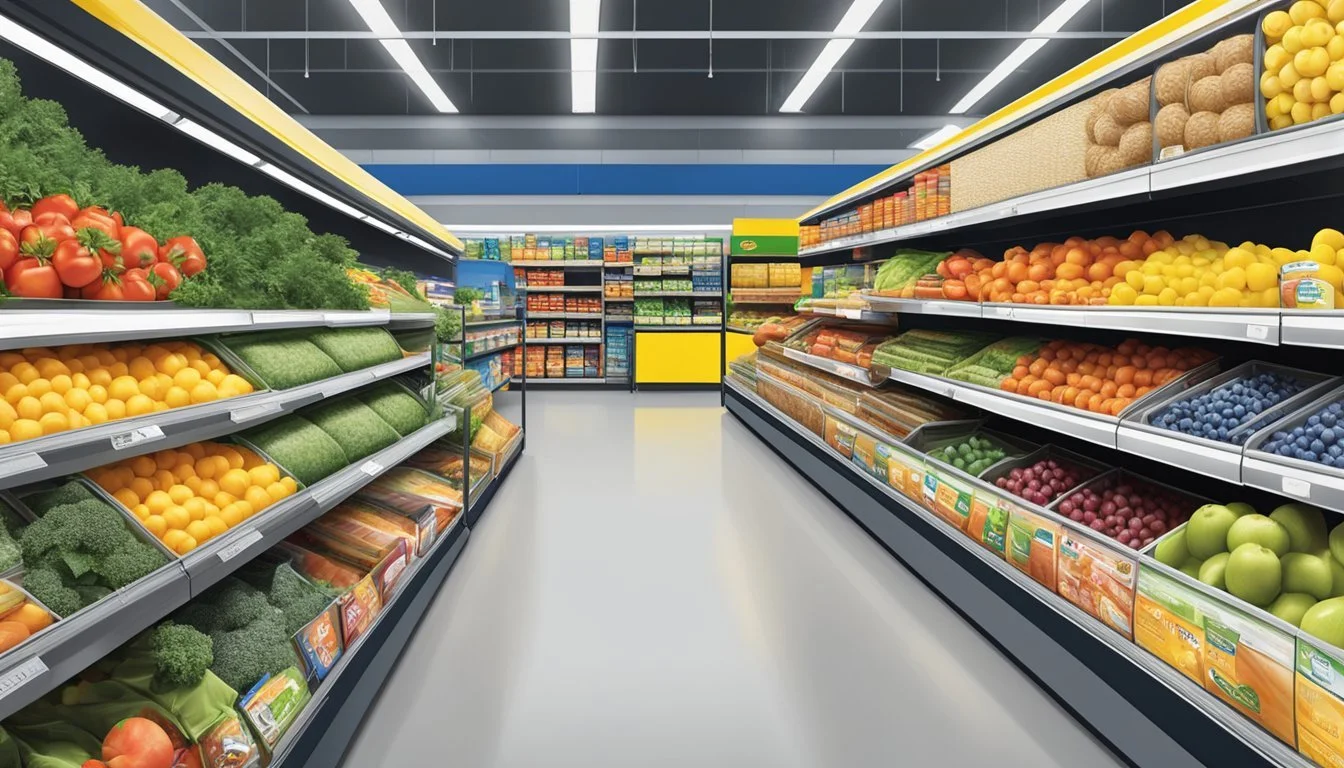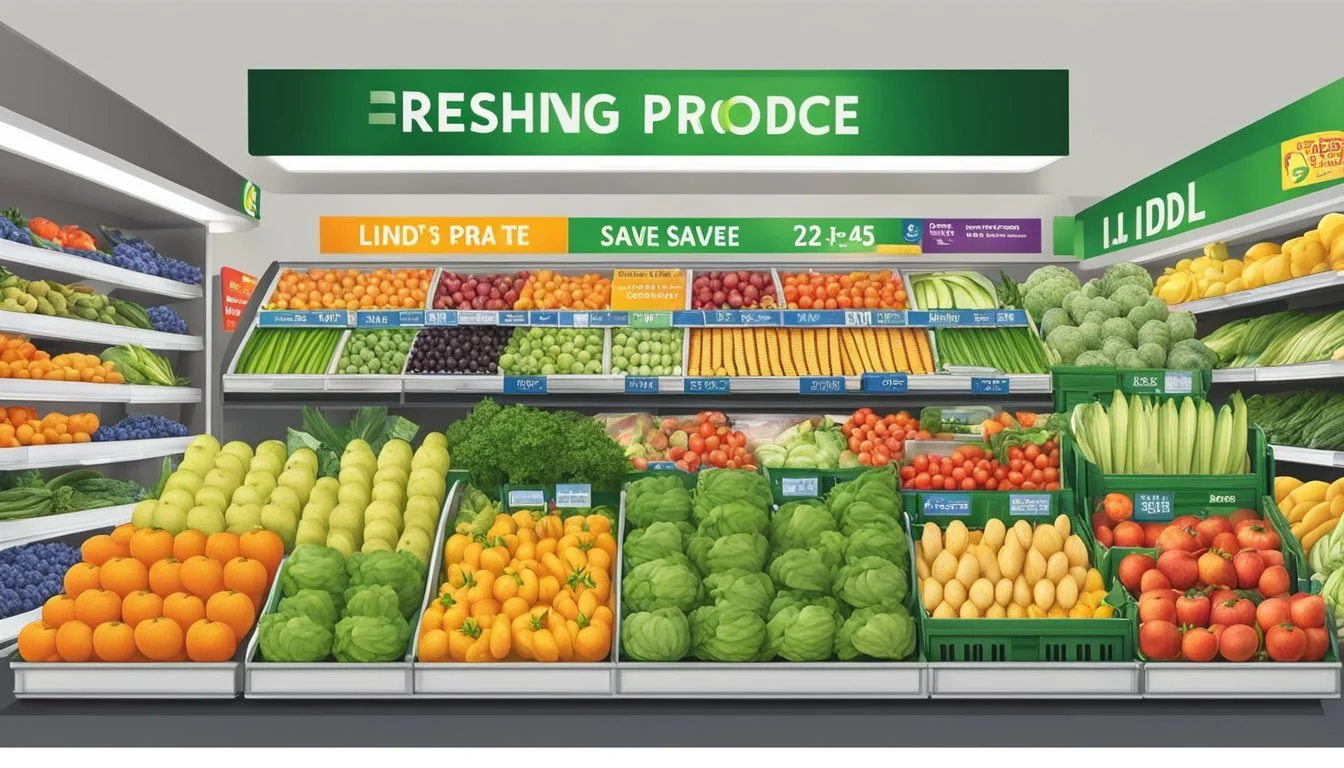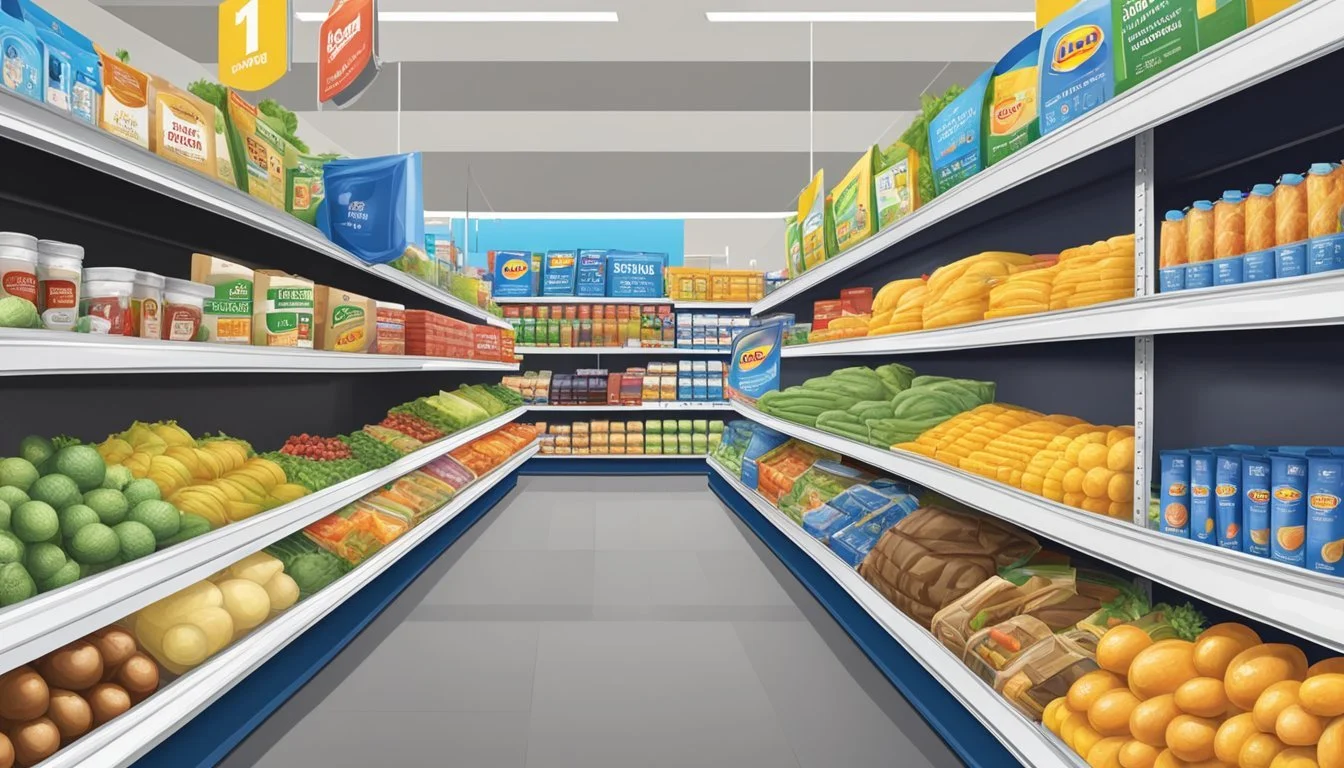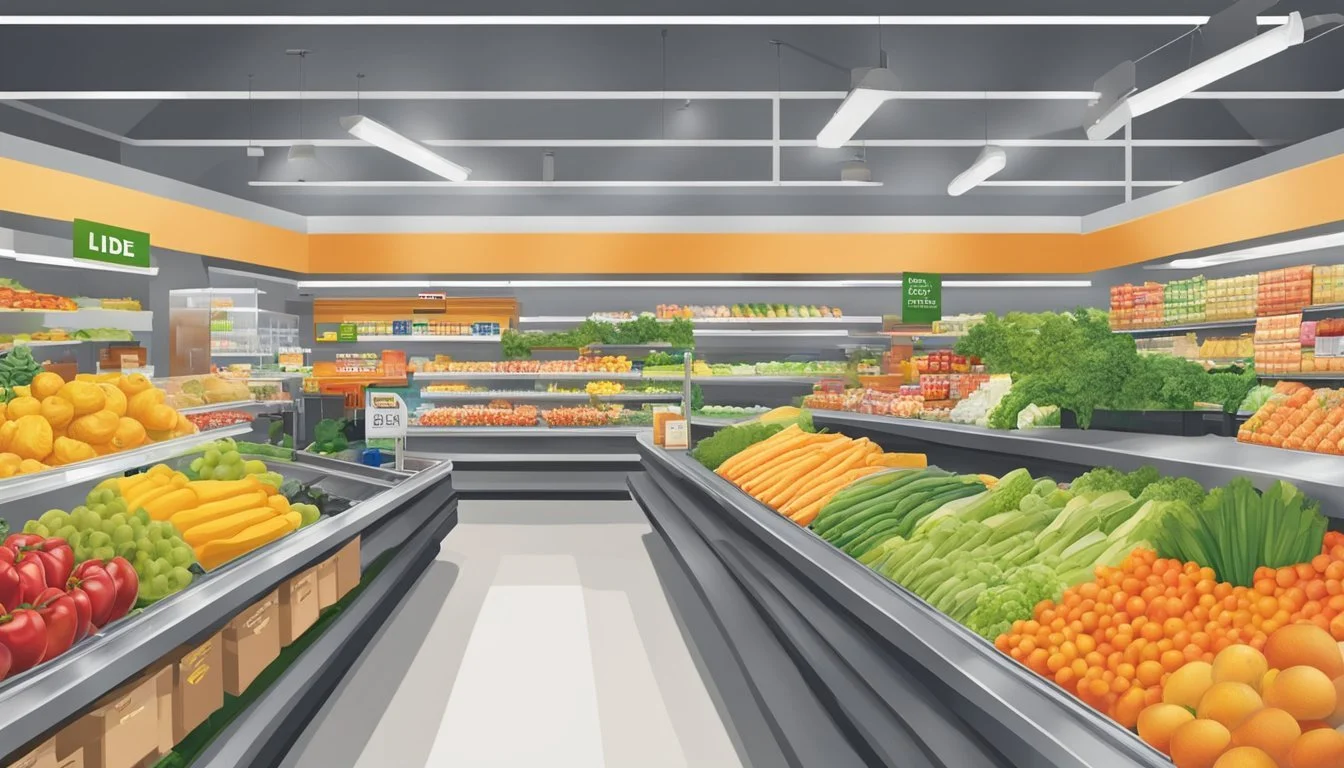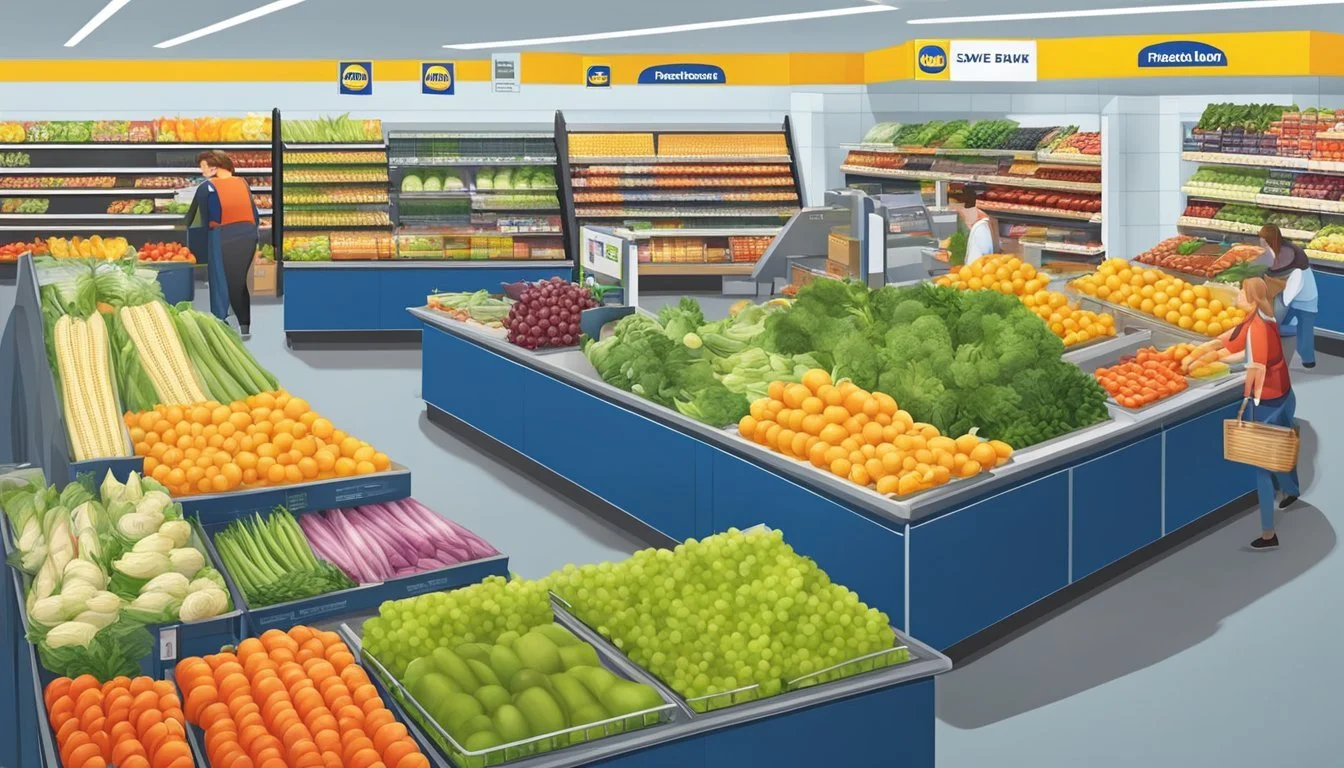Lidl vs Save Mart
A Comprehensive Comparison of Prices, Quality, and Selection
Grocery shopping is an essential part of everyday life, and finding the right store can make a big difference in your budget and shopping experience. Lidl and Save Mart are two popular grocery chains that offer distinct advantages for shoppers.
Lidl, a German discount supermarket, has been expanding its presence in the United States. Known for its low prices and efficient store layouts, Lidl aims to provide quality products at affordable rates. Save Mart, on the other hand, is a regional supermarket chain primarily operating in California and Nevada. It focuses on offering a wide variety of products and emphasizes fresh produce and local goods.
The better choice between Lidl and Save Mart depends on individual preferences and priorities. Lidl typically offers lower prices on many items, making it attractive for budget-conscious shoppers. Save Mart may appeal to those who value a broader selection of products and a more traditional supermarket experience. Comparing the two stores can help shoppers determine which one best meets their needs and shopping habits.
Company Backgrounds
Lidl and Save Mart have distinct histories and growth trajectories in the grocery retail sector. Both companies have expanded significantly over the years, but their origins and geographical focus differ considerably.
Lidl's Origins and Expansion
Lidl traces its roots to Germany, where it was founded in 1973 by Dieter Schwarz. The company started as a small grocery store in Ludwigshafen and rapidly grew into a major discount supermarket chain. Lidl expanded across Europe in the 1990s and 2000s, entering new markets with its low-price, high-quality model.
In 2017, Lidl made its debut in the United States, opening its first stores on the East Coast. The company has since expanded its U.S. presence, with a particular focus on states like Georgia. As of 2024, Lidl operates over 170 stores in the U.S. and continues to grow.
Save Mart's History and Growth
Save Mart Supermarkets began in 1952 when Nick Tocco and Mike Piccinini opened their first store in Modesto, California. The company focused on providing fresh, quality products at competitive prices.
Over the decades, Save Mart expanded throughout Northern California and Nevada through organic growth and acquisitions. In 2007, the company significantly increased its presence by purchasing Albertsons' Northern California division.
Save Mart operates under various banners, including Save Mart, Lucky, and FoodMaxx. The company remains family-owned and has built a strong reputation for community involvement and supporting local producers.
Store Brand and Product Range
Lidl and Save Mart offer distinct approaches to their product offerings, with Lidl focusing heavily on private labels while Save Mart provides a mix of store brands and national names. Both stores aim to meet diverse customer needs through their product ranges.
Private Label Focus
Lidl places a strong emphasis on its private label products, which make up a significant portion of its inventory. These store-brand items span various categories, from pantry staples to specialty goods. Lidl's private labels often match or exceed the quality of name-brand alternatives at lower price points.
Save Mart, in contrast, carries a blend of private label and national brand products. Their store brands, such as "Value Choice" and "Sun Harvest," offer budget-friendly options across multiple departments. However, Save Mart's private label selection is not as extensive as Lidl's.
Selection and Variety
Lidl typically maintains a more limited selection compared to traditional supermarkets. This curated approach allows for efficient store layouts and lower prices. Despite the narrower range, Lidl rotates its stock frequently, introducing new items through weekly specials.
Save Mart provides a broader variety of products, including a wider array of national brands. This expanded selection caters to customers seeking specific name-brand items or more diverse options. Save Mart's larger stores accommodate this increased variety.
Exclusive Offerings
Lidl features unique promotions like "Lidl Surprises," which introduce limited-time, non-grocery items such as clothing, tools, or home goods. These rotating specials create a treasure hunt atmosphere for shoppers.
Save Mart focuses more on food-related exclusives, often highlighting local and regional products. They may feature specialty items from California producers or offer exclusive flavors of their store-brand products. Save Mart's approach aims to cater to local tastes and support regional suppliers.
Pricing Strategies and Affordability
Lidl and Save Mart employ distinct pricing strategies to attract budget-conscious shoppers. Both stores aim to provide value, but their approaches differ in key ways.
Everyday Low Prices
Lidl focuses on maintaining consistently low prices across its product range. The store's no-frills approach allows it to keep costs down and pass savings to customers. Lidl's private label products often undercut national brands by 20-30%.
Save Mart takes a different tack, offering a mix of low-priced items and periodic sales. The store's larger footprint accommodates a wider selection of national brands alongside its own label products.
Discount Pricing
Lidl runs weekly specials on select items, advertising deep discounts to draw customers. These deals often feature seasonal produce or popular grocery staples.
Save Mart employs a more traditional supermarket discount model. The store offers regular sales cycles, digital coupons, and a loyalty program that provides personalized deals to members.
Budget-Friendly Shopping
Lidl's compact stores and limited SKUs make it easier for shoppers to stick to a budget. The retailer's focus on private label products means customers can find quality items at lower price points.
Save Mart caters to budget shoppers through its mix-and-match promotions and bulk buying options. The store's larger size allows for more variety, giving customers the ability to compare prices across brands.
Both chains prioritize competitive pricing on everyday essentials like milk, eggs, and bread to attract cost-conscious consumers.
Quality and Freshness of Products
Lidl and Save Mart both prioritize product quality and freshness, but employ different strategies. Their approaches to produce, meat, and other perishables impact the overall shopping experience.
Produce and Meat Standards
Lidl focuses on offering high-quality produce at competitive prices. They source fruits and vegetables from local farms when possible, ensuring freshness. Their produce section features a wide variety of options, including organic choices. Lidl's meat department emphasizes quality cuts at affordable prices.
Save Mart prides itself on its extensive produce selection. They work closely with California growers to provide fresh, seasonal fruits and vegetables. Their meat department offers a range of options, from value packs to premium cuts. Save Mart's butchers can provide custom cuts upon request.
Both stores implement strict quality control measures for their produce and meat. However, Lidl's smaller store format may result in a more limited selection compared to Save Mart's larger footprint.
Freshness Across the Store
Lidl maintains freshness through frequent restocking and efficient inventory management. Their bakery department produces fresh bread and pastries throughout the day. Dairy products and other perishables are carefully monitored for expiration dates.
Save Mart's larger stores allow for more extensive fresh food departments. They offer a wider range of prepared foods, including a salad bar and hot food options. Save Mart's deli counter provides freshly sliced meats and cheeses.
Both stores strive to minimize food waste by offering discounts on items approaching their sell-by dates. Lidl's smaller format may lead to quicker turnover of products, while Save Mart's larger inventory might result in some items sitting on shelves longer.
Shopping Experience
Lidl and Save Mart offer distinct shopping experiences that cater to different customer needs. The two stores diverge in their layouts, service approaches, and additional offerings.
Store Layout and Navigation
Lidl's stores feature a compact, efficient design. The aisles are typically wider, allowing for easier movement with shopping carts. Products are often displayed in their original shipping boxes, creating a no-frills atmosphere. Lidl's layout emphasizes a quick shopping trip, with a central bakery section that greets customers with fresh aromas.
Save Mart opts for a more traditional supermarket layout. The stores are generally larger, with dedicated departments for produce, meat, and deli items. Aisles are clearly labeled, and signage helps guide shoppers to specific product categories. Save Mart's size allows for a broader product selection, but may require more time to navigate.
Customer Service
Lidl employs a lean staffing model. Cashiers are trained to work efficiently, focusing on quick transactions. Customer service desks are limited, with most inquiries handled directly at the checkout.
Save Mart provides a more personalized service approach. Dedicated customer service counters offer assistance with returns, refunds, and general inquiries. Employees are often available throughout the store to help locate items or answer questions about products.
Additional Services and Policies
Lidl offers a streamlined shopping experience with fewer additional services. The store focuses on core grocery items and rotating non-food merchandise. Lidl's return policy is straightforward, allowing returns within 30 days with a receipt.
Save Mart provides a range of additional services. Many locations feature pharmacies, floral departments, and extensive prepared food sections. The store often participates in local community events and offers fuel rewards programs. Save Mart's refund policy tends to be more flexible, with some locations offering satisfaction guarantees on store-brand products.
Locations and Accessibility
Lidl and Save Mart have distinct geographical footprints and store networks that impact their accessibility for shoppers. The number and placement of locations affect how convenient each chain is for customers in different regions.
Store Proximity and Convenience
Lidl primarily operates on the East Coast of the United States, with a growing presence in states like Georgia. The company has been steadily expanding its store count in recent years. Save Mart, on the other hand, focuses its operations in California and Nevada.
Lidl aims to position its stores in convenient locations within communities, often near residential areas or along major roads. Save Mart tends to have larger format stores, sometimes in shopping centers or standalone locations.
For shoppers, the choice between Lidl and Save Mart often comes down to which chain has stores closer to their homes or workplaces. Proximity is a key factor in grocery shopping convenience.
Lidl's smaller store format allows it to fit into more urban and suburban locations. Save Mart typically requires larger spaces for its full-service supermarkets.
Product Availability and Store Policies
Lidl and Save Mart differ in their product offerings and customer-focused policies. These factors can significantly impact the shopping experience and customer satisfaction.
Inventory and Stock Consistency
Lidl focuses on a curated selection of products, with a mix of store-brand and name-brand items. Their inventory rotates regularly, featuring weekly specials and seasonal offerings. This approach keeps the selection fresh but may lead to inconsistent availability of specific products.
Save Mart maintains a more traditional grocery store model with a wider range of products. They stock a consistent variety of national brands alongside their store-brand items. Save Mart's larger floor space allows for more product options, potentially offering better consistency in stock availability.
Both stores strive to keep popular items in stock, but Lidl's limited assortment model may result in more frequent out-of-stock situations for certain products.
Return and Refund Policies
Lidl implements a customer-friendly return policy. They offer a "Lidl Love It Guarantee," allowing customers to return any product they're not satisfied with for a full refund.
Save Mart also provides a satisfaction guarantee on their products. They typically allow returns with a receipt within a reasonable timeframe.
Both stores aim to make the return process straightforward, but specific policies may vary by location. Lidl's policy tends to be more lenient, potentially not requiring a receipt for returns in some cases.
Perishable items often have stricter return policies at both stores to ensure food safety and quality standards are maintained.
Additional Offerings and Special Features
Lidl and Save Mart offer more than just groceries. Both stores provide unique products and promotions to attract customers and enhance their shopping experience.
Seasonal and Non-Food Items
Lidl stands out with its ever-changing middle aisle, featuring seasonal items and non-food products. This section often includes clothing, outdoor furniture, and kitchen appliances at competitive prices. Lidl's wine selection is particularly noteworthy, offering quality bottles at affordable prices.
Save Mart focuses more on traditional grocery offerings but does carry some seasonal items. Their selection of non-food products is typically more limited compared to Lidl.
Exclusive Deals and Promotions
Lidl runs weekly specials on various products, including their "Preferred Selection" line of premium foods. These deals often feature significant discounts on both food and non-food items.
Save Mart offers loyalty programs and digital coupons to provide savings to regular customers. They frequently promote local and regional products, appealing to shoppers who prefer to support nearby producers.
Both stores have their own store-brand products, but Lidl's range is generally more extensive and includes items comparable to national brands at lower prices.
Customers' Perception and Brand Reputation
Lidl and Save Mart have distinct brand images shaped by customer experiences and marketing efforts. Shopper surveys and feedback provide insights into how each store is perceived in terms of value, quality, and overall shopping experience.
Surveys and Customer Feedback
Lidl consistently receives high marks for its low prices and value proposition. A significant portion of customers appreciate Lidl's focus on affordability without compromising quality. Many shoppers express surprise at finding premium products at budget-friendly prices.
Save Mart, on the other hand, is often praised for its wider selection of national brands. Customers value the familiarity and trust associated with well-known products. Some surveys indicate that Save Mart shoppers are willing to pay slightly higher prices for this broader range of options.
Both stores face criticism in certain areas. Lidl sometimes receives negative feedback about limited product variety, while Save Mart occasionally faces complaints about higher prices compared to discount chains.
Brand Loyalty and Trust
Lidl has successfully built brand loyalty through its #LidlSurprises campaign, which challenges public perception of its products. This approach has helped Lidl establish trust and credibility among value-conscious shoppers.
Save Mart benefits from long-standing relationships with customers in its operating regions. Many shoppers express loyalty to Save Mart due to its community involvement and reliable selection of familiar brands.
Customer trust in both stores is influenced by product quality and consistency. Lidl's private label offerings have gained a reputation for good quality at low prices. Save Mart's mix of national brands and store-brand items provides options for different customer preferences.
Brand perception surveys show that Lidl is often seen as innovative and budget-friendly, while Save Mart is viewed as a traditional, full-service grocery store. These distinct brand identities appeal to different customer segments, contributing to each store's loyal customer base.
Comparative Analysis
Lidl and Save Mart offer distinct shopping experiences, with key differences in pricing, product selection, and store layouts. A closer look at their head-to-head performance and overall value proposition reveals important insights for budget-conscious shoppers.
Head-to-Head Comparison
Lidl, a German discount grocer, typically offers lower prices on everyday staples compared to traditional supermarkets like Save Mart. Lidl's private-label products make up a large portion of their inventory, often priced 20-30% less than name brands. Save Mart, a regional chain, carries a wider variety of national brands but at higher price points.
Store layouts differ significantly. Lidl stores are compact and efficient, with a limited selection focused on high-turnover items. Save Mart locations are larger, offering more variety and specialty departments like bakeries and delis.
Product quality can vary. Lidl's produce is often competitively priced but may have shorter shelf lives. Save Mart typically provides fresher produce and a more extensive selection of organic options.
Deciding the Better Option
For budget shoppers, Lidl often emerges as the more cost-effective choice. Its prices on staple items frequently undercut both Save Mart and other competitors like Walmart. However, Save Mart may be preferable for those seeking a broader range of products or specific brands.
Shopping frequency plays a role in the decision. Lidl's limited selection works well for quick, budget-friendly shops. Save Mart's larger stores and wider variety are better suited for less frequent, larger shopping trips.
Location and convenience are crucial factors. Lidl has fewer stores, while Save Mart may offer more accessible locations in certain regions. Shoppers should consider travel time and fuel costs when evaluating overall savings.



